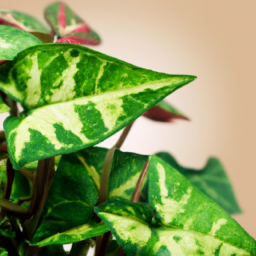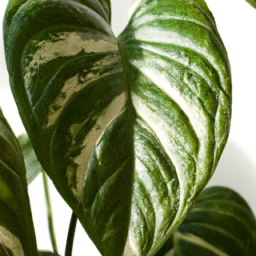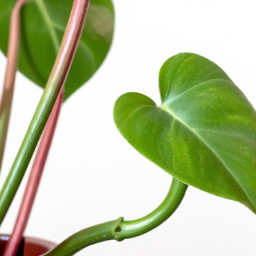
Hey there plant lovers! Are you looking to spruce up your living space while also doing your part to help the environment? Well, look no further because today we’re diving into the wonderful world of common house plants and how they can provide both aesthetic and environmental enhancements to your home. Whether you have a green thumb or are just starting to explore the world of indoor gardening, this blog post will be your ultimate guide to choosing the perfect plants that not only add beauty to your surroundings but also contribute to cleaner air and a healthier planet. So, let’s get ready to bring the outdoors in and discover the incredible benefits of common house plants: aesthetic and environmental enhancements!
Benefits of Common House Plants for Aesthetic Enhancements
Introduction
Welcome to the wonderful world of common house plants! In this guide, we will explore the numerous benefits of having these green beauties in your home. Not only do they add a touch of natural elegance to any space, but they also provide a range of environmental enhancements. So, let’s dive in and discover how common house plants can enhance both the aesthetics and the environment of your home.
Improved Air Quality
One of the most significant benefits of common house plants is their ability to improve air quality. Through a process called photosynthesis, plants absorb carbon dioxide and release oxygen, effectively purifying the air we breathe. They also help to remove harmful toxins such as formaldehyde, benzene, and trichloroethylene from the air, which are commonly found in indoor environments.
Furthermore, certain house plants, like the ever-popular Snake Plant and Peace Lily, have been proven to filter out volatile organic compounds (VOCs) that can be emitted by household products and materials. By introducing these plants into your living space, you can create a healthier and fresher environment for you and your loved ones.
Not only do house plants improve air quality, but they also increase humidity levels. This can be particularly beneficial during dry winter months when indoor heating systems tend to dry out the air. By releasing moisture through a process called transpiration, plants can help combat dry skin, irritated throats, and even reduce the risk of respiratory problems.
Stress Reduction and Mental Well-being
Another remarkable benefit of common house plants is their ability to reduce stress and promote mental well-being. Numerous studies have shown that being in the presence of plants can have a calming effect on our minds and bodies.
Plants help create a sense of tranquility and connection with nature, which can significantly reduce stress levels. Their green foliage and natural patterns have a soothing effect on our eyes and minds, providing a refreshing break from the constant stimulation of screens and artificial lighting.
Additionally, caring for house plants can be a therapeutic activity in itself. The act of watering, pruning, and nurturing these living organisms can help foster a sense of responsibility and purpose, providing a mindful and rewarding experience.
Enhanced Productivity and Concentration
Believe it or not, common house plants can also boost productivity and concentration levels. Research has shown that having plants in the office or study space can lead to improved focus, memory retention, and overall cognitive performance.
Plants help reduce distractions and create a more pleasant working environment, which can enhance productivity. Their presence also helps to reduce mental fatigue and increase attention span, allowing you to stay focused on tasks for longer periods.
Furthermore, plants have been found to reduce background noise levels, making it easier to concentrate and process information. So, whether you’re working from home or studying for an important exam, having a few house plants nearby can make a significant difference in your productivity and concentration levels.
Conclusion
Common house plants offer a myriad of benefits for both the aesthetics and the environment of your home. From improving air quality and reducing stress to enhancing productivity and concentration, these green companions have a lot to offer. So, why not bring some natural beauty into your living space and enjoy the numerous advantages that common house plants provide?
Remember to choose plants that suit your lifestyle and space, and don’t forget to give them the care and attention they deserve. With a little bit of greenery, you can transform your home into a haven of natural elegance and reap the many rewards that common house plants have to offer.

Environmental Benefits of Common House Plants
When it comes to enhancing the aesthetics of our homes, common house plants are often the go-to choice for many homeowners. However, their benefits go beyond just adding beauty to our living spaces. These plants also offer numerous environmental advantages that can significantly improve the quality of our indoor environment. In this article, we will explore the various ways in which common house plants can enhance our surroundings and contribute to a healthier and more sustainable living environment.
Purifying Indoor Air
One of the most significant environmental benefits of common house plants is their ability to purify indoor air. Research has shown that certain plants can effectively remove harmful pollutants such as formaldehyde, benzene, and trichloroethylene from the air we breathe. These pollutants are commonly found in household items like carpets, furniture, and cleaning products, and can have adverse effects on our health over time.
Plants accomplish this air purification process through a natural mechanism called phytoremediation. They absorb pollutants through their leaves and roots, breaking them down into harmless byproducts. Some of the most effective air-purifying plants include the Spider Plant, Peace Lily, and Snake Plant. By introducing these plants into our homes, we can significantly improve the air quality and reduce the risk of respiratory problems.
In addition to purifying the air, house plants also release oxygen during photosynthesis, helping to increase oxygen levels in our living spaces. This can be particularly beneficial in rooms with poor ventilation or during the winter months when windows are often kept closed.
Humidity Regulation
Another environmental enhancement provided by common house plants is their ability to regulate humidity levels indoors. Plants naturally release moisture through a process called transpiration. This release of water vapor can help to increase humidity in dry environments and decrease it in humid conditions, creating a more balanced and comfortable atmosphere.
By maintaining optimal humidity levels, house plants can have a positive impact on our overall well-being. Dry air can cause respiratory irritation, dry skin, and even increase the risk of infections. On the other hand, excessive humidity can promote the growth of mold and mildew, which can lead to allergies and respiratory issues. The presence of house plants can help to prevent these problems by regulating the moisture content in the air.
Moreover, by increasing humidity, plants can also reduce the occurrence of static electricity, which can be a nuisance during the winter months when the air is typically drier. This can help to prevent static shocks and protect electronic devices from potential damage.
Reducing Noise Levels
Common house plants can also contribute to a quieter and more peaceful living environment by reducing noise levels. The leaves and branches of plants have the ability to absorb and diffract sound waves, acting as natural sound barriers. This can be particularly beneficial in homes located in noisy urban areas or near busy roads.
Studies have shown that the presence of plants can help to reduce noise levels by up to 5 decibels, making the indoor environment more serene and conducive to relaxation. This can have a positive impact on our mental well-being, as excessive noise has been linked to stress, sleep disturbances, and even cardiovascular problems.
Furthermore, plants can also help to mask background noise by producing gentle rustling sounds as they sway in response to air movement. This can create a soothing and calming effect, similar to the sound of leaves rustling in the wind.
In conclusion, common house plants offer not only aesthetic enhancements but also numerous environmental benefits. From purifying indoor air to regulating humidity levels and reducing noise, these plants play a crucial role in creating a healthier and more sustainable living environment. So, why not bring some greenery into your home and enjoy the many advantages that house plants have to offer?

Tips for Choosing and Caring for Common House Plants
Houseplants not only add beauty and aesthetic appeal to our homes, but they also have numerous environmental benefits. They purify the air, increase humidity, and reduce stress levels. However, choosing the right houseplants and providing them with proper care can sometimes be a daunting task. In this guide, we will provide you with step-by-step tips on how to choose and care for common house plants.
Choosing the Right House Plants
When it comes to choosing house plants, it’s important to consider factors such as lighting conditions, space availability, and your personal preferences. Here are some tips to help you make the right choice:
1. Assess the lighting conditions: Different house plants have different lighting requirements. Some thrive in bright, direct sunlight, while others prefer indirect or low-light conditions. Before purchasing a house plant, evaluate the lighting conditions in your home and choose plants that will thrive in those conditions.
2. Consider the space available: Take into account the available space in your home. Some house plants require more space to grow, while others are more compact. If you have limited space, opt for smaller plants or those that can be placed on shelves or hanging baskets.
3. Research the care requirements: Each house plant has specific care requirements, including watering frequency, humidity levels, and temperature preferences. Before bringing a plant home, research its care instructions to ensure that you can provide the necessary conditions for its growth.
Caring for Your House Plants
Once you have chosen the perfect house plants for your home, it’s essential to provide them with proper care to ensure their health and longevity. Here are some essential care tips:
1. Watering: Proper watering is crucial for the well-being of your house plants. Most plants prefer to be evenly moist, but not waterlogged. Check the soil regularly and water when the top inch feels dry. Avoid overwatering as it can lead to root rot.
2. Humidity: Many house plants thrive in humid environments. To increase humidity, you can place a tray filled with water near your plants or use a humidifier. Misting the leaves with water also helps to boost humidity levels.
3. Fertilizing: House plants require nutrients to grow and thrive. Use a balanced, water-soluble fertilizer and follow the instructions on the packaging for the correct dosage and frequency. Over-fertilizing can damage the plants, so it’s important to follow the recommended guidelines.
4. Pruning: Regular pruning helps to maintain the shape and size of your house plants. Remove any dead or yellowing leaves, as well as any overgrown branches. Pruning also encourages new growth and improves the overall appearance of the plant.
5. Pest control: Keep an eye out for common pests such as aphids, spider mites, and mealybugs. If you notice any signs of infestation, take immediate action to prevent the pests from spreading. There are various organic and chemical pest control methods available, so choose the one that suits your preferences.
By following these tips, you can ensure that your common house plants not only enhance the aesthetics of your home but also thrive in their environment. Remember to regularly monitor their condition, adjust care as needed, and enjoy the beauty and benefits they bring to your living space.
In a Nutshell
House plants not only add a touch of beauty to our living spaces but also offer numerous environmental benefits. These green companions not only enhance the aesthetic appeal of our homes but also contribute to cleaner air and a healthier environment. With their ability to purify the air by removing toxins and releasing oxygen, common house plants are not just decorations but also natural air filters.
One of the most popular house plants, the spider plant, is not only visually appealing with its long, arching leaves but also acts as a natural air purifier. It is known to remove harmful substances such as formaldehyde and carbon monoxide from the air, making it an ideal choice for any home. Another common house plant, the peace lily, not only adds a touch of elegance with its white blooms but also helps improve indoor air quality by removing pollutants like benzene and trichloroethylene. These plants not only enhance the beauty of our living spaces but also contribute to a healthier and more pleasant environment.
Frequently Asked Questions (FAQ):
Q1: What are some common house plants that can enhance the aesthetics of my home?
A1: There are several common house plants that can add a touch of beauty to your living space. Some popular choices include the Spider Plant, Peace Lily, Snake Plant, Pothos, and ZZ Plant. These plants come in various shapes, sizes, and colors, allowing you to find the perfect fit for your home’s aesthetic.
Q2: How can house plants improve the environmental quality of my home?
A2: House plants can have a positive impact on the environmental quality of your home in multiple ways. They release oxygen and absorb carbon dioxide, helping to improve air quality. Additionally, certain plants can remove toxins and pollutants from the air, making it healthier for you to breathe. House plants also contribute to moisture balance and can increase humidity levels, which is beneficial for your skin and respiratory system.
Q3: What are some low-maintenance house plants for beginners?
A3: If you’re new to caring for house plants, there are several low-maintenance options that are perfect for beginners. Some examples include the Snake Plant, ZZ Plant, Pothos, Spider Plant, and Aloe Vera. These plants are known for their resilience and ability to thrive with minimal care. They can tolerate a wide range of lighting conditions and don’t require frequent watering, making them ideal for those who may not have a green thumb.
Q4: How do I choose the right house plants for different rooms in my home?
A4: When selecting house plants for different rooms, it’s essential to consider their lighting requirements and the specific conditions of each space. Rooms with ample natural light, such as south-facing rooms, are suitable for plants that require bright indirect light. For low-light areas, opt for plants that can tolerate shade or lower light levels. Additionally, consider the size and growth habit of the plant to ensure it fits well within the room’s available space.
Q5: How often should I water my house plants?
A5: The watering frequency for house plants can vary depending on factors such as plant type, size, and environmental conditions. As a general guideline, it’s best to allow the top inch of soil to dry out before watering again. Overwatering can lead to root rot, while underwatering can cause dehydration. Regularly check the moisture level of the soil by inserting your finger into it. If it feels dry, it’s time to water. However, it’s always important to research the specific watering needs of each plant to ensure you provide the appropriate care.
Dr. Olivia Green is a botanist with over two decades of experience in indoor plant cultivation. She holds a Ph.D. in Plant Biology and has dedicated her career to researching plant behavior in controlled environments. Dr. Green is passionate about helping plant enthusiasts master the art of indoor gardening through her extensive knowledge and practical insights.


